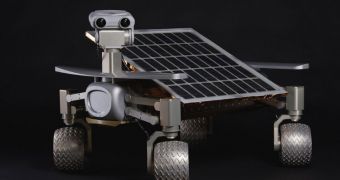The German Part-Time Scientists (PTS) team announces that it is intent on winning the $30 million Google Lunar X Prize, with a rover that will make use of the same advanced technologies as the world's leading supercomputers.
The team includes more than 100 scientists, developers and engineers, who came together to develop a lunar exploration rover called Asimov, after famous science-fiction author Isaac Asimov. The robot will use advanced computer components to conduct its mission.
Specifically, the German team has set its eye on NVIDIA-built graphics processing units (GPU) of the same type used for supercomputers. These small-scale brains will enable the rover to roam the surface of the Moon, relay back reports of its activities in real time, and created maps of its surroundings in 3D.
These are also the main objectives of the Google Lunar X Prize – “safely land a robot on the surface of the Moon, have that robot travel 500 meters over the lunar surface, and send video, images and data back to the Earth.”
“Teams must be at least 90% privately funded, though commercially reasonable sales to government customers are allowed without limit,” a post on the contest's official webpage states. There are currently 26 teams enlisted in the challenge.
The competition will end in late 2015, or whenever a team claims the prize. The PTS group hopes that, by using the NVIDIA GPU, they will be able to achieve all these objectives before the other teams.
“NVIDIA GPUs will be instrumental in helping us land the Asimov rover safely and allowing us to calculate a wealth of detailed information to enhance our understanding about the lunar surface,” explains the leader of the PTS team, Robert Böhme.
“At the same time, we will demonstrate the amazing scientific accomplishments that are possible with modern, high-performance GPU technology,” he adds. A number of Tesla GPUs have already been installed at the mission's control center.
With these processors, the team will be able to handle the massive flow of data from Asimov, and will also be capable of relaying back new navigational directions in the narrowest time frames, Space reports.
The GPUs will come in handy before the actual mission as well, since they will enable the team to conduct a large number of launch, flight and landing simulations. Tesla units can now be found on three of the world's five fastest supercomputers, the PTS group adds.

 14 DAY TRIAL //
14 DAY TRIAL //